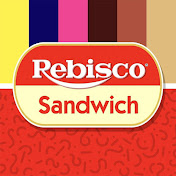Distance in Tagalog
Terms of Address in Tagalog
PRACTICAL IDEAS AND RESOURCES
Resources in this section curated by: Aissa Canteras
General Information

Mikey Bustos Pinoy Lessons "Respect For Elders" | YouTube Video

Filipino Terms of Endearment and Contempt | Article

Why do most Filipinos call foreigners "Sir"? | Forum

Conyo: The Philippine Language That Defined a Social Class | Article

Pare, boss, dear and Pinoy culture | Article
Addressing Male Friends
Pare

Classic Tambalan. Classic Kulitan. | YouTube Video
This video features famous Filipino celebrities Ogie Olcasid and Michael V. using the term "Pre" as a way to address male friends. As mentioned in the video, the two are known for their decades of friendship and are very close in and outside the business. The origin of "Pre" can be traced back to Spanish colonial times. It originated from the Filipino term "Kumpare" which actually came from the Spanish word "Compadre", meaning godfather. "Kumpare" was eventually shortened to "Pare", then finally "Pre". While "Pre" is still being used to address godfathers, this term is also now often used between close male friends. It is commonly used by adults, especially the older ones. Over the years, "Pare" has also evolved to other terms like "Pards" and "Parekoy". These are more commonly used by younger adults.

More examples of the use of "Pare" between male friends | YouTube Video

Pare Ko | YouTube Video
Dude

Between two male friends | YouTube Video
This video shows the use of "Dude" between two male friends. Although it is an English word, this is commonly mixed with Filipino just like in the video where the man says "Dude, pa-Lucky Me ka naman diyan". "Dude" is associated with "conyo language", a language described as a distinctive mix of Filipino and English often heard among high school and college students who study at expensive colleges and universities. While it can establish closer social distance between friends, it can also create a huge gap in solidarity if used inappropriately.
Bro

Pagkakaibigan | YouTube Video
This video features a young man using the term "Bro" to address his male friend. "Bro" which is short for brother, is a term used between male friends. It is typically used by teenagers and young adults. Like "Pare" and "Dude", "Bro" is only used between males. In a situation similar to the one in this video, the female friend can address her male friends using their first name (and vice versa). "Bro" can also be used to address male acquaintances or even strangers especially if you want to establish a sense of connection or equality between an addressee who might feel inferior due to differences in social status or personality.
Bes, First name

Term of Endearment | YouTube Video
This video features the term "Bes" used as term of endearment between best friends, as well as the use of first names as a familiarizer between female and male friendships. "Bes" which is short for "Best" came from the term "Best Friend". It is a relatively new address term which resulted from social media but is now used in daily conversations. Other variations include besh, beshie, or even beh. Unlike "Pare", "Dude" and "Bro", "Bes" is not used between male friends. "Bes" is commonly used between female friends but as seen in the video, it can also be used by females to address male best friends.
Addressing Female Friends
Mare

Makatipid nang Malaki Kapag Nag-Higantipid | YouTube Video
This video features the term "Mare" as a way to address adult female friends and strangers. The origin of "Mare" can be traced back to the Spanish word "Comadre" meaning godmother. The word "Kumare" is the Filipino term for godmother and over the years, it has evolved to "Mare". "Mare" is used to address adult females especially between mothers, regardless of social distance. As seen in the video, the lady approaches a random female shopper and calls her "Mare". "Kumare" and "Mare" are used by middle-aged and older folks. It is slowly being replaced by "Mars", a term used by younger female adults.
Mars

Mars Pa More | YouTube Video
This video features "Mars Pa More", a Philippine morning talk show targeted specifically for mothers. The show includes cooking segments, family-friendly games, social media trend challenges, travel suggestions, tips for beauty and home living. In the show, you will often hear the female co-hosts refer to each other as "Mars". Note, however, that is it not used to address the male host. If you watch more episodes, you will see how "Mars" can be used based on the different guests they invite in the show. "Mars Pa More" has a rival show entitled "Mumshy", another address term used between female friends and acquaintances.
Teh

Push Mo Yan TEA | YouTube Video
This video plays on the term "Teh", a word that originated from "Ate" which literally means older sister. "Teh" has become popular due to its wide use in social media, most especially with memes. It is associated with the line "Push mo yan, 'Teh!" which translates to "Go for it, sister!". Use "Teh" when giving advice, compliments, or maybe teasing your fellow female friends.
Day

King Crab Mukbang | YouTube Video
This video features the use of the word "Inday", a Visayan term of endearment for girls. The video, which features popular Filipino vlogger Mimiyuuh and actress Maymay Entrata, shows how they fondly call each other "Inday" or "Day". Over the years, the term "Inday", however, has developed a different meaning especially in the country's capital (Manila) because many Visayans move to Manila to work as household helpers. The use of "Inday" connotes power distance between two interlocutors so use it with caution.

Inday is not always a maid - Leonor Magtolis Briones | Article
Article about the use of "Inday" or "Day".
Girl

Kwentong Jollibee Valentine Series 2022: ILY | YouTube Video
This is a video that features the term "Girl" as a term used to address female friends. It is often used by teenagers just like the characters in the tv commercial and signifies closeness between one another. "Girl" can also be heard in workplaces although in this case, the relationship between the interlocutors are a lot farther. If you forget your co-worker's name, call her "Girl".
Beshie, Mamsh, First name
Mamsh, Mumshie, Girl

14/29 JolliSerye S1 Episode 3: Fairygod Mumshie | YouTube Video
This video features the use of "Mamsh" as a term of endearment towards girl friends. It is unknown whether the term came from the word "Ma'am" or "Mommy" but it may have possibly been from both since it is a term commonly heard between friends in work places. At work, friendships are not necessarily close so using these terms of endearments establishes a depper connection with co-workers. In the video, it can be observed that another variation of "Mamsh" is "Mumshie". It is also used interchangeably with "Girl". So, instead of saying “Friend”, “Sis,” or other casual words to call a mom or a lady friend, add a bit of fun to the conversation by calling her “Mumshie”.
Addressing Store Personnel, Public Transportation Drivers, etc.
Kuya

Cornetto TV Commercial #UbebeILoveYourWay | YouTube Video
This video shows the use of "Kuya" as a way to address male workers in the service field. Examples include store attendants (as shown in this video), parking attendants, ticket booth attendants, etc. It can be noted in this video that the characters are almost the same age but the customer still uses "Kuya". This is very common in this context. Unlike the use of "Kuya" within family or closer circles, age does not play a part whether one should use "Kuya" or not in more distant relationships. In addition, aside from a sign of respect, the function of "Kuya" is to soften the severity of situation since in most cases, dealing with service workers entail making requests, or even issuing complaints.
Lolo

Kwentong Jollibee: Biyahe (Journey) | YouTube Video
"Lolo" is the Filipino term for grandfather. While it is often used as a family term, it can also be used to address old-aged service personnel and strangers as a sign of respect. In most cases, you will see them working in public markets, sari-sari stores (also known as small neighborhood stores), and public transportations (as seen in the video). "Lolo" can be shortened to "Lo", and when addressing someone with this term, always remember too accompany it with "po" and/or "opo".
Bro

Keep Gaming with McDelivery | YouTube Video
This video features a young man using the term "Bro" to address a delivery guy. "Bro" which is short for brother, is a term used between male friends but can also be used to address strangers. As shown in the video, men often use this to address service personnel who are the same age or younger than them. It also helps soften speech functions so keep this in mind if you want to make a request or express a complaint.
Kuya, Ate, Totoy, Boss

Coke Philippines Did It Again | YouTube Video
This video shows the variety of ways you can address workers in the service field. You will see a female parking attendant addressed as "Ate", a male jeepney driver "Kuya", a grocery bagger "Totoy", and a security guard "Boss". "Ate" and "Kuya" are probably two of the most commonly used terms and if you are not sure how to address service workers, these two terms are the safest to use. It may apply to all ages "Totoy" is rarely used since it refers to a young child or teenager. Lastly, use "Boss" to get on the good side of workers. If you get pulled over by a cop, try to address them "Boss" and maybe you'll get your way out of a ticket.
Manong

Fishball | #AtinAngMundo | YouTube Video
"Manong", is a term often used to address street vendors. In some cases, terms are made even more specific by adding the item the vendor is selling. For example, in the video, the man is selling fishballs so he is addressed as "Manong Fishball". Other examples include Manong Ice Cream, and Mang Tataho. This term is commonly used to address middle-aged to old-aged men and women.
Tay

BUYING Everything In A SARI SARI Store! | YouTube Video
A sari-sari store is a small store often seen around busy streets and residential neighborhoods. They tend to be operated in the shopkeeper's place of residence so most customers are from around the neighborhood and have a sense of familiarity and closeness to whoever is running the place. Because of this, family terms are often used like "Tay" (short for "Tatay" which meaning=father) as heard in the video. Other commonly used terms include "Lolo/Lola", "Manong/Manang", or "Kuya/Ate".
Ate

DIVISORIA Shopping!! (Sino Mas Nakatipid?) | YouTube Video
If you find yourself in a "tiangge", a place that consists of temporary stalls that sells all sorts of goods, use the term "Ate" to address store attendants. Regardless of your gender, "Ate" can be appropriately used and a courteous way of calling the attention of female attendants. Here's a tip: if you want to haggle for a lower price, ask for their first name and add it to "Ate". For example, you can say "Ate Fe, pahingi naman ng discount".
Sir, Ma'am, Miss (First Name)

UNLI SHOPPING at THE SM STORE! (FOR FREE?!) | YouTube Video
This video features a couple vlogger shopping in the biggest retail company in the Philippines - SM Department Store. In this video, you'll see how shoppers normally address sales attendants in malls. If you forward to 3:40, the vloggers address the store manager as "Miss Odyssey". Oftentimes, the term "Miss" is used but in this case, a first name is added since she is being introduced in the video. Notice also how the manager addresses the vlogger/customer as "Sir". Do not be surprised if you are addressed as "Ma'am" or "Sir" in stores because this tends to be the standard wherever you go. There is even a relative term "Mamser" which is now used for either gender. It is a sign of hospitality and good customer service. In minutes 8:23 and 8:57, the customer addresses the sales person as "Ma'am" and the other "Sir". You can never go wrong when you use these terms in a mall.
Kuya

Prank On Delivery Riders + Surprise! | YouTube Video
Delivery riders took center stage when the pandemic started in 2020. When the rest of the population was keeping safe and staying home, they were the only ones roaming around the streets sending packages from one place to another. The best way to address them is "Kuya" which you can observe from the video. Other terms you can use include "Chief", "Boss", and "Manong" but if you are not sure, "Kuya" is the way to go.
Addressing Strangers
Miss

New Flavor Alert | YouTube Video
This video shows the use of "Miss" to address female strangers. In this context, the man is trying to impress the woman by paying for her ticket. Coming from the literal meaning of "Miss" i.e. an unmarried woman, "Miss" is often a term of address which men use to talk to female strangers. For example "Miss, ano ang panagalan mo?" (Miss, what's your name?) or "Miss, pwede hingin number mo?" (Miss, may I have your number?).

Parokya ni Edgar - Silvertoes | YouTube Video
This song features the word "Miss" and similar to the video above, it is also used by young men to address single ladies. As described in OneMusicPH (2016), this popular song with the famous line "Miss, miss, pakitigil lang please" is about a "not-so-pretty girl, vying for the attention of the boys around her, thinking that she, exuding with so much appeal, can easily ensnare the boys and make them hers. However, for the boys in question, this girl is not only lacking appeal, but lacking the personality that would have hopefully made her even a little bit attractive." Definitely a catchy song with lots of language tidbits to learn from.
Lola, La

Kwentong Jollibee: Powers | YouTube Video
"Lola" is the Filipino term for grandmother. While it is often used as a family term, it can also be used to address elderly strangers. It is a sign of respect and a friendly way to approach the elderly. In the video, the man offers his seat to the old lady. He addresses him "La", a short way of saying "Lola". When you see an old person struggling, offering help is always welcome. Use "Lola" or "Lolo" and as always, do not forget to use "po".
Pogi, Ganda

Calling my classmates "ganda/pogi 😂 | YouTube Video
Here is an example of the use of "Ganda" and "Pogi" as an attention getter. There is not much conversation in this video but notice how people immediately look at the speaker when called "Ganda" or "Pogi". "Ganda" which means pretty and "Pogi" which means handsome are used to address teenagers and young adults. It is often used to call the attention of strangers but can also be used as a term of endearment between friends. Be flattered when someone calls you "Ganda" or "Pogi".
Iho

Wala si Mama | YouTube Video
"Iho" is a term of endearment used for young boys. It is commonly used by elders and it comes from the Spanish word "Unico Ico" meaning only son. "Iho" can also be used to address outside the family. In this video, a lady addresses the young boy "Iho" (0:27 "Ay, iho, bakit ganyan ang butones mo?").

#HijaAko: These Filipinas Are Brave, Young, And Sick Of The Victim-Blaming | Blog Post
Recently, the term "Iha" has gained traction because of a controversial Twitter exchange between radio host Ben Tulfo and singer Kakie Pangilinan.
Addressing Others at School
Mrs. (Last Name), Ma'am

Fave Student | YouTube Video
This video shows the use of Misis and "Ma'am" to address teachers. No matter what level, students are expected to use honorific terms as a form of respect. In this video, the student grabs the attention of the teacher by saying "Mrs. Flores". This is the most common form wherein the terms Miss, Misis, Mister, Sir are added to the teacher's last name. Note that first names are rarely used, if not at all. The video also shows the use of Ma'am. This is common as well but is reserved more for the older teachers.
Sir

168: Ang Halaga ng Pagmumuni-muni at Pagninilay w/ Ser Ice Pasco | Podcast Episode
This podcast features an episoode where the host, Ali Sangalang, interviews his college professor Ice Pasco. As you listen to this podcast, you will observe different ways in which Ali addresses his former professor. Examples include Sir and Sir Ice. The two seem to have a close relationship so the use of the first name (after "Sir") is not surprising.
Ma’am

Kwentong Jollibee Mother's Day 2019: Schoolboy | YouTube Video
If you are working as a teacher in the Philippines particularly in elementary and high school, it is common to address parents of students as "Ma'am" or "Sir". If you forward the video to minute 3:28, you will hear how the school prinicipal says "Pasensta na po, Ma'am.." (I'm sorry, Ma'am..). Another way to address parents is through the use of "Mrs." and "Mr.". In early childhood settings, there is a little more flexibility. For example, in some preschools, teachers address mothers as "Mommy + first name".
Addressing Family
Ate

A Selecta Film: Mommy and Daddy's Favorite | YouTube Video
This video features the use of the term "Ate" its literal meaning. Ate (pronounced as ah-teh), means eldest sister. In this video, the younger sister (Nikki) addresses her older sister (Carla) in two ways. In the earlier scene, she calls her "Ate Carla" but in the succeeding scene, she calls her "Ate". In most cases, the term "Ate" is used but if you need to get more attention or you need a precursor for a big favor or an apology, then adding the first name is always a good strategy. Aside from the younger sister's use of the term, it is also important to note how the parents addressed the older sister. In the video, the father addresses their eldest daughter using her first name but on the gift card, they chose to write "Ate Carla". For adults, using "Ate" functions more as a term of endearment. Also, parents often use this to send a subliminal message that "you are the eldest, get your act together". All of these also apply to "Kuya" which means eldest brother.
Kuya

Rebisco Sandwich Joshua Garcia | YouTube Video
This video shows that the term "Kuya" (as well as "Ate") is not only used to refer to the eldest brother. It can also be used to address older cousins, friends, neighbors, schoolmates, and other acquaintances. In this context, "Kuya"and "Ate" no longer function as family terms but more of an honorific children need to use to show respect and courtesy to those older than them. An average age gap would be two years (but sometimes less). In this video, the younger characters refer to their older cousin "Kuya Joshua". When the relationship between interlocutors is not too close and not too distant, it is more common to add the first name of the person. Once you get tagged as "Ate" or "Kuya by someone, there is a high possibility that they will address you as "Ate" and "Kuya" even when you turn into adults.
Tita

Superstore: Marcus Speaks Tagalog S05E02 & S05E13 | YouTube Video
"Tita" is the Filipino term for aunt. "Tita" is a family term that is commonly used with the person's first name like Tita Marie or Tita Rizza. The use of "Tita" is not only limited to family members. In Filipino language, "Tita" can also be used to address a friend's mother. This clip is from the television show "Superstore" and it shows Mateo addressing his friend Mateo's mother "Tita". In the clip, he says, "Tita Rooma, kamusta na po?" He even does the traditional mano, a gesture used by Filipinos to show respect to elders.
Tito

Cornetto #CONEfessions: Next Year | YouTube Video
Here is another example of the use of "Tito" outside family. In this video, the male suitor addresses the girl's father as "Tito". This is a little bit tricky because in most cases, there is a level of closeness that needs to be established before addressing your partner's parents as "Tito" and/or "Tita". Some opt to use "Ma'am" or "Sir" or some just try to avoid it altogether.
Addressing Colleagues
U.G.E., Ma'am

JolliSerye Season 3 Episode 1: Evonne Adarna | YouTube Video
This short series is a great way to observe different address terms used in the workplace. There are a variety of ways to address colleagues especially bosses so using the knowing how to use the right terms always matter. In this video, you will notice how the employees address their boss using her initials U.G.E.. Other terms include "Boss" and "Ma'am". In the Philippines, the workplace culture dictates how address terms are used but if you are not sure, it is safe to stick to the honorifics and other formal terms then adjust accordingly.
Summary List
Anak
https://www.youtube.com/watch?v=a9V3SbfrT6o
https://www.youtube.com/watch?v=rK7-3zCK15Y
Apo
https://www.youtube.com/watch?v=SIVSq6RTSnA
Ate
https://www.youtube.com/watch?v=fWZnP-PKmWQ
https://www.youtube.com/watch?v=El2ylzBKEe0
Bes / Beshie
https://www.youtube.com/watch?v=EF7s87AFSPk
https://www.youtube.com/watch?v=borIQfM9b5g
Boss
https://www.youtube.com/watch?v=fWZnP-PKmWQ
Bro
https://www.youtube.com/watch?v=VEaoYjq7n-A
https://www.youtube.com/watch?v=cxjb5656Z1s&list=PLs0u5YiVHzO3vfVOG0mlefy43JMp1-JbO&index=3
Bunso
https://www.youtube.com/watch?v=CPvUcMAaZa8&list=PLs0u5YiVHzO3vfVOG0mlefy43JMp1-JbO&index=2
Daddy/Dad
https://www.youtube.com/watch?v=El2ylzBKEe0
https://www.youtube.com/watch?v=RcMi80qKiNY
Father
https://open.spotify.com/episode/4JRbEGwQtHCBttl8s9ijPR?si=DKzN9FLdQhWxtr04Cf_QnQ
First Name
https://www.youtube.com/watch?v=El2ylzBKEe0
https://www.youtube.com/watch?v=SjgiX97P0uU
Girl
https://www.youtube.com/watch?v=hTgRiSxH9JU
Hon
https://www.youtube.com/watch?v=W-4Iaw_r8mk
Iho
https://www.youtube.com/watch?v=a9V3SbfrT6o
Insan
https://www.youtube.com/watch?v=SjgiX97P0uU
Kuya
https://www.youtube.com/watch?v=fWZnP-PKmWQ
https://www.youtube.com/watch?v=wBa4y1HBrBQ
https://www.youtube.com/watch?v=CPvUcMAaZa8&list=PLs0u5YiVHzO3vfVOG0mlefy43JMp1-JbO&index=2
https://www.youtube.com/watch?v=SjgiX97P0uU
Lola / La
https://www.youtube.com/watch?v=rK7-3zCK15Y
https://www.youtube.com/watch?v=SIVSq6RTSnA
Lolo / Lo
https://www.youtube.com/watch?v=q05aEY02l4M&t=64s
Maam
https://www.youtube.com/watch?v=HA15eLB-z7Q&list=PLs0u5YiVHzO3vfVOG0mlefy43JMp1-JbO
https://youtu.be/UNDpEUCBYkk
Mamsh
https://www.youtube.com/watch?v=aMgrqXb3n0w
Manong
https://www.youtube.com/watch?v=a9V3SbfrT6o
https://www.youtube.com/watch?v=q05aEY02l4M&t=64s
https://www.youtube.com/watch?v=7-3hoYhxuX8&t=13s
Mare / Mars
https://www.youtube.com/watch?v=RyILEHPXaU4
https://youtu.be/zlYhvej00EU
Miss/Misis
https://www.youtube.com/watch?v=HA15eLB-z7Q&list=PLs0u5YiVHzO3vfVOG0mlefy43JMp1-JbO
https://www.youtube.com/watch?v=Nj7tiSejOtA
Pare/Pre
https://www.youtube.com/watch?v=lajcI-ObFRg
https://www.youtube.com/watch?v=U_-JBgBvAWk
Sir
https://open.spotify.com/episode/2jvc55Qvf3stKMC5Tj4AXl?si=aUj3KeUCRZCpzLDcA5NZrA
Teh
https://www.youtube.com/watch?v=fWJT9nEHetM
https://www.youtube.com/watch?v=GNEp05ihkOc
Tita
https://www.youtube.com/watch?v=3MUqmPfgkyA
https://www.youtube.com/watch?v=SjgiX97P0uU
https://www.youtube.com/watch?v=0ieaIvLT8ow


